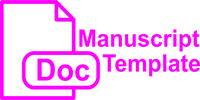MAIN MENU
HUBUNGAN PENGETAHUAN GIZI DENGAN SIKAP DALAM PEMILIHAN MAKANAN SEHAT PADA REMAJA DI AREA PEDESAAN
Abstract
Keywords
Full Text:
PDF (Bahasa Indonesia)References
Aulia, N. R. (2021). Peran Pengetahuan Gizi Terhadap Asupan Energi, Status Gizi dan Sikap Tentang Gizi Remaja. Jurnal Ilmiah Gizi Dan Kesehatan (JIGK), 02(02), 31–35.
Akseer, N., Al-Gashm, S., Mehta, S., Mokdad, A., & Bhutta, Z. A. (2017). Global and regional trends in the nutritional status of young people: a critical and neglected age group. Annals of the New York Academy of Sciences, 1393(1), 3–20. https://doi.org/10.1111/nyas.13336
Atmarita, A., Jahari, A. B., Sudikno, S., & Soekatri, M. (2016). Asupan Gula, Garam dan Lemak di Indonesia: Analisis Survei Konsumsi Makanan Individu (SKMI) 2014. Gizi Indonesia, 39(1), 1. https://doi.org/10.36457/gizindo.v39i1.201
Aulia, N. R. (2021). Peran Pengetahuan Gizi Terhadap Asupan Energi , Status Gizi dan Sikap Tentang Gizi Remaja. Jurnal Ilmiah Gizi Dan Kesehatan (JIGK), 02(02), 31–35.
Badan Pusat Statistik Indonesia. (2010). Peraturan Kepala Badan Pusat Statistik Nomor 37 Tahun 2010 tentang Klasifikasi Perkotaan dan Perdesaan di Indonesia. Badan Pusat Statisistik Republik Indonesia, 681.
Bargiota, A., Delizona, M., Tsitouras, A., & Koukoulis, G. N. (2013). Eating habits and factors affecting food choice of adolescents living in rural areas. Hormones, 12(2), 246–253. https://doi.org/10.14310/horm.2002.1408
Candler, T., S, M. B. B., Costa, S., Ph, D., Heys, M., Res, M. D., Costello, A., D, M., Viner, R. M., & Ph, D. (2016). Prevalence of Thinness in Adolescent Girls in Low- and Middle-Income Countries and Associations With Wealth , Food Security , and Inequality. Journal of Adolescent Health, 1–9. https://doi.org/10.1016/j.jadohealth.2016.11.003
Dewanti, R., Probandari, A., & Mulyani, S. (2022). Factors Affecting The Choices of Healthy Diet among Adolescents in Rural Areas. Media Gizi Indonesia, 17(2), 204–212. https://doi.org/10.20473/mgi.v17i2.204-212
Ensaff, H., Coan, S., Sahota, P., Braybrook, D., Akter, H., & Mcleod, H. (2015). Adolescents’ Food Choice and the Place of Plant-Based Foods. Nutrients, 4619–4637. https://doi.org/10.3390/nu7064619
French, S. A., Story, M., Neumark-Sztainer, D., Fulkerson, J. A., & Hannan, P. (2001). Fast food restaurant use among adolescents: Associations with nutrient intake, food choices and behavioral and psychosocial variables. International Journal of Obesity, 25(12), 1823–1833. https://doi.org/10.1038/sj.ijo.0801820
Hafid, W., & Hanapi, S. (2019). Hubungan Aktivitas Fisik dan Konsumsi Fast Food dengan Kejadian Obesitas Pada Remaja. Kampurui Jurnal Kesehatan Masyarakat (The Journal of Public Health), 1(1), 6–10. https://doi.org/10.55340/kjkm.v1i1.49
Hardinsyah. (2011). Analisis Konsumsi Lemak, Gula Dan Garam Penduduk Indonesia. Gizi Indonesia, 34(2), 92–100.
Hendrayati, S., & Rauf, S. (2010). Pengetahuan Gizi, Pola Makan, dan Status Gizi Siswa SMP Negri 4 Topobulu Kabupaten Bantaeng. Media Gizi Pangan, 9(1), 33–40.
Kementerian Kesehatan RI. (2018). Laporan Riskesdas 2018. Laporan Nasional Riskesdas 2018, 53(9), 154–165.
Kementrian Kesehatan RI. (2013). Laporan Riskesdas 2013. Laporan Nasional Riskesdas 2013, 7(5), 803–809. https://doi.org/10.1517/13543784.7.5.803
Kustin. (2018). Perbedaan Pola Konsumsi Junk Food Food Pada Remaja Putri SMP Daerah Perkotaan Dan Pedesaan Terhadap Kejadian Menarche Dini. Jurnal Kesehatan, 6(3), 110–116. https://doi.org/10.25047/j-kes.v6i3.62
Laenggeng, A. H., & Lumalang, Y. (2015). Hubungan Pengetahuan Gizi dan Sikap Memilih Makanan dengan Status Gzi Siswa SMP Negri 1 Palu. Jurnal Kesehatan Tadulako, 1(1), 49–57.
Nuryani, & Paramata, Y. (2018). Intervensi Pendidik Sebaya Meningkatkan Pengetahuan, Sikap dan Perilaku Gizi Seimbang pada Remaja di MTSN Model Limboto. Indonesian Journal of Human Nutrition, 5(2), 96–112. Paulus, D., Jeanjean, M., & Remy, A, S. (2001). Dietary habits during adolescence Ð results of the Belgian Adolux Study. European Journal of Clinical Nutrition, March 2000, 130–136.
Rahajeng, E., & Tuminah, S. (2009). Prevalensi Hipertensi dan Determinannya di Indonesia. Majalah Kedokteran Indonesia, 59, 580–587.
Retnaeni, & Maretno, I. (2011). Perbedaan Pengetahuan Gizi dan Status Gizi pada Remaja di SMA Kota dan Desa (Studi di SMAN 1 Boyolali dan SMAN 1 Cipogo). UMS Library. http://eprints.ums.ac.id/id/eprint/14768
Romadona, E. (2011). Perbedaan Status Gizi Remaja Putri Pedesaan dan Remaja Putri Perkotaan (Studi di SMAN 1 Pakel, Tulungagung dan SMAN 6 Surabaya). Universitas Airlangga. http://repository.unair.ac.id/id/eprint/23064
Sri, P., Permaesih, D., & Elisa, J. (2016). Asupan Natrium Penduduk Indonesia: Analisis Data Survei Konsumsi Makanan Individu (SKMI) 2014. Gizi Indonesia, 39(1), 15–24.
Stefanus, I., & Palupi, N. (2014). Strategi Implementasi Pencantuman Informasi Kandungan Gula , Garam , dan Lemak untuk. Mutu Pangan, 1(2), 159–164.
Syafira, S. (2015). Hubungan Pengetahuan Gizi dengan Sikap Mengkonsumsi Makanan Sehat Siswa SMK. Jurnal Ilmiah Pendidikan Kesejahteraan Keluarga, 3(1), 1–8.
Syakir, S. (2018). Pengaruh Intervensi Penyuluhan Gizi dengan Media Animasi Terhadap Perubahan Pengetahuan dan Sikap Tentang Anemia Pada Remaja Putri. ARGIPA (Arsip Gizi Dan Pangan), 3(1), 18–25. https://doi.org/10.22236/argipa.v3i1.2446
Tasmini, Farmawati, A., Sunarti, Hastuti, P., Sadewa, A., Prasetyastuti, & Ngadikun. (2018). Kadar Glukosa Darah dan Tekanan Darah pada Penduduk Pedesaan dan Perkotaan di Daerah Istimewa Yogyakarta. Journal of Commuity Empowerment For Health, 1(1), 45–53.
Wawan, & Dewi, M. (2011). Teori dan Pengukuran Pengetahuan, Sikap dan Perilaku Manusia (11th ed.). Muha Medika.
Yarmaliza, & Zakiyuddin. (2019). Pencegahan Dini Trhadap Penyakit Tidak Menular (PTM) Melalui Germas. Jurnal Pengabdian Masyarakat Multidisiplin, 3(2), 93–100.
Zahra, J., Ford, T., Jodrell, D., Building, V., & Lane, P. (2013). Child : Cross-sectional survey of daily junk food consumption , irregular eating , mental and physical school children. 1–11. https://doi.org/10.1111/cch.12068
DOI: https://doi.org/10.54444/jik.v13i2.135
Refbacks
- There are currently no refbacks.
Copyright (c) 2023 Suherman Rate

This work is licensed under a Creative Commons Attribution-ShareAlike 4.0 International License.
Indexed by:
Jurnal Ilmu Kebidanan (JIK)
Published by Lembaga Penelitian dan Pengabdian kepada Masyarakat (LPPM), Sekolah Tinggi Ilmu Kesehatan Adila Bandar Lampung
p-ISSN: 2088-9011 | e-ISSN: 2721-0839
STIKES ADILA
Mail : Jl. Soekarno Hatta No 110, Rajabasa, Kota Bandar Lampung
Telp : 082182486199
email: jurnalilmuk@gmail.com















